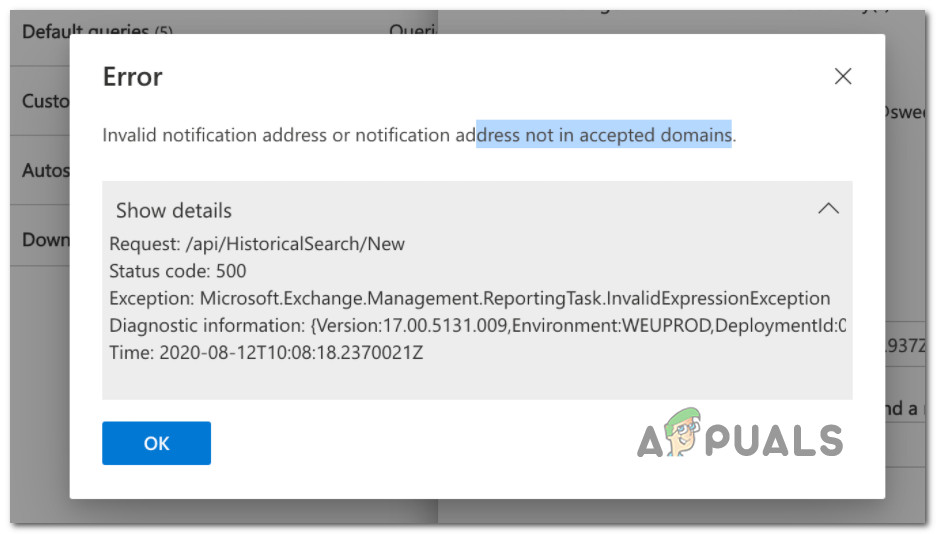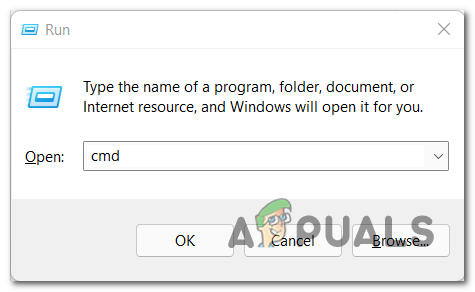After researching this problem extensively, we managed to identify a couple of common scenarios that might be responsible for this particular issue. Here’s a shortlist of potential culprits that might trigger the ‘Recipient Address Rejected. Access Denied’ error when you’re trying to send an outbound email: Now that we went over every potential reason why you might be dealing with the ‘Recipient Address Rejected. Access Denied’ error, let’s start troubleshooting the issue using a series of methods that other affected users have successfully used.
Insert the correct recipient
Before you do anything else, start by double-checking if your recipient email is correct. If you previously emailed this recipient, make sure it still has the clearance to get past the mail gateway. If you’re experiencing this issue within a gated email network, ensure that the recipients that return the ‘Recipient Address Rejected. Access Denied’ errors are still part of your organization. In case you’re using Exchange discover that you get this error because you’re mailing to non-existent users, one solution is to create a CatchAll mailbox/address. If you’ve just determined that you’re mailing to the correct recipient\s and you’re still getting bounces with the ‘Recipient Address Rejected. Access Denied’ error, move down to the next method below.
Flush DNS & Clear Temp TCP/IP Data
If the error is only occurring while you are connected to this particular network, you should start suspecting a potential DNS issue. It’s not uncommon to see the ‘Recipient Address Rejected. Access Denied’ error occurring due to a problem with the data transmission or protocol. In this case, if a single computer on the network is affected, you should assume that a glitch with the network adapter or a bad DNS range is preventing the emails from leaving your gateway. To fix this issue, you should do a complete TCP or IP reset on the affected computer (or on every computer part of this network that’s experiencing this issue). Follow the instructions below for complete steps on flushing the DNS and TCP / IP temp data: If the ‘Recipient Address Rejected. Access Denied’ error is still not fixed, move down to the next potential fix below.
Ask Recipient to whitelist
Another fairly common reason why you can expect to get this error is an active anti-spam filter that’s presently used by the recipient domain. Due to your past history or the behavior of the recipient, your message is being detected and labeled as spam – that’s most likely the reason why it’s bouncing back. From our investigations, it turns out that there are 3 big reasons why you can expect to see the ‘Recipient Address Rejected. Access Denied’ error when there’s a shield put in place by the recipient:
The recipient of the spam filter has marked a similar message as spam in the past. In this case, every email from the same sender and every email that is similar to the one that was marked as spam will be treated in the same way.Email gets bounced due to a domain policy that blacklists or defines every email coming from this particular address as spam.The message is received by the email domain but it’s segregated due to a policy and ends up not being delivered to the intended inbox.
If any of the scenarios presented above are true, there is only one fix – asking the recipient to whitelist you so that they’ll get your email correspondence. But since you can’t really do this from your regular email since it bounces back, you’ll need to use an alternate email. If the scenario described above was not effective as you are experiencing this issue after configuring Exclaimer Cloud for Microsoft 365, move down to the next potential fix below.
Make the Exchange mail folders Public (if applicable)
If you are seeing the ‘Recipient Address Rejected. Access Denied’ error when trying to send an email after configuring it with Exclaimer Cloud via Microsoft 365, the reason for this is most likely related to the Directory-Based Edge Blocking (DBEB). Just so you understand, DBEB is enabled by default in Microsoft 365 and it’s configured to reject external emails with addresses that are not found inside the Azure Active Directory. But that doesn’t mean you don’t have those addresses. Most likely, they are considered external since they are currently stored in a public folder mailbox that is not synchronized with the Azure Active directory. If you find yourself in this particular scenario, there are three potential fixes that will allow you to fix the error: Note: All of the methods presented below will require you to be a global administrator with full credentials.
Ensure that public folders are hosted on-premise
This operation will ensure that the public folders containing your emails are hosted on-premise. This operation involves accessing the Microsoft Azure Active Directory Connect screen and making some adjustments to the Optional Features. This operation will ensure that the Mail Enabled Public Folder addresses will no longer be considered invalid by the DBEB feature. Follow the instructions below to fix the ‘Recipient Address Rejected. Access Denied’ error by ensuring that every public folder is hosted on-premise:
Ensure that public servers are hosted Online
Keep in mind that Directory-Based Edge Blocking (DBEB) is not yet supported for Mail Enabled Public Folders. That’ll mean that you’ll need to resort to a few workarounds. The first workaround is to stop routing the emails send to Public folders to Exclaimer Cloud – this can be done by accessing the Mail flow menu and establishing an exception rule. Follow the instructions below to ensure that the public servers are hosted Online:
Disable Directory Based Edge Blocking
Although we’re not recommending this method, another workaround that will allow you to prevent the DBEB from blocking your emails is to disable the Directory-Based Edge Blocking mechanism entirely. To do this follow the instructions below:
How to Fix ‘Right click and Send to mail recipient’ not WorkingFIX: Windows Live Mail Error 0x8007007A When Sending EmailsHow to Fix ‘The Requested URL Was Rejected. Please Consult With Your…Fix: Outlook Not Sending Emails ‘2007, 2010, 2013, 2016’




